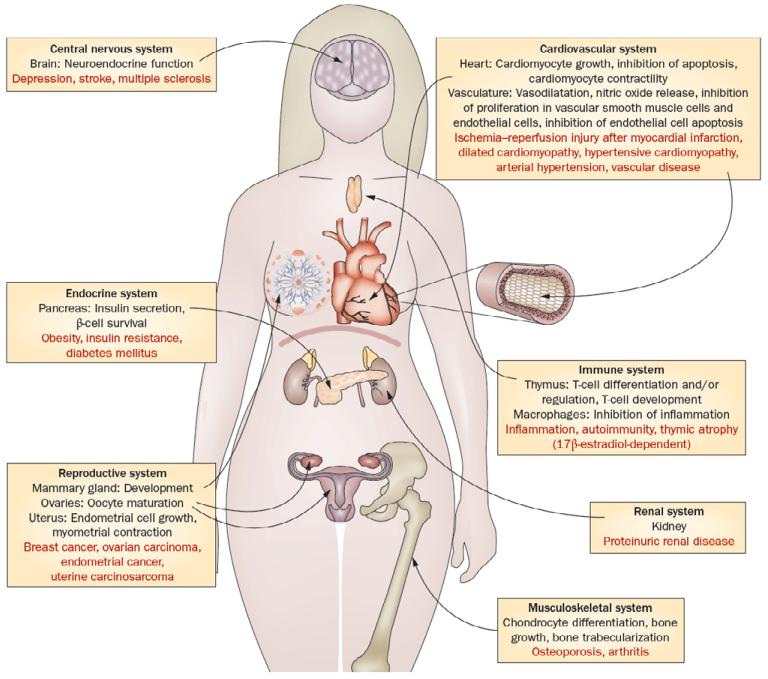Figure 3.
Current experimental and clinical evidence implicates a physiological role (shown in black) for GPER in neuroendocrine and cerebral functions, immunity and immune cell function, metabolic and endocrine regulation, vascular, myocardial, and kidney function, as well as development and reproductive functions. In addition, data obtained in experimental models of disease and/or tissue from patients with disease suggest roles for GPER in pathological conditions (shown in red), such as diabetes mellitus, arterial hypertension, proteinuric renal disease, osteoporosis, arthritis, immune diseases, such as multiple sclerosis, and cancer. Targeting GPER activity with highly selective ligands in humans may represent a novel approach for the treatment of these conditions, for molecular imaging, as well as for theranostic approaches and personalized medicine. Figure reproduced from (Prossnitz and Barton, 2011).

